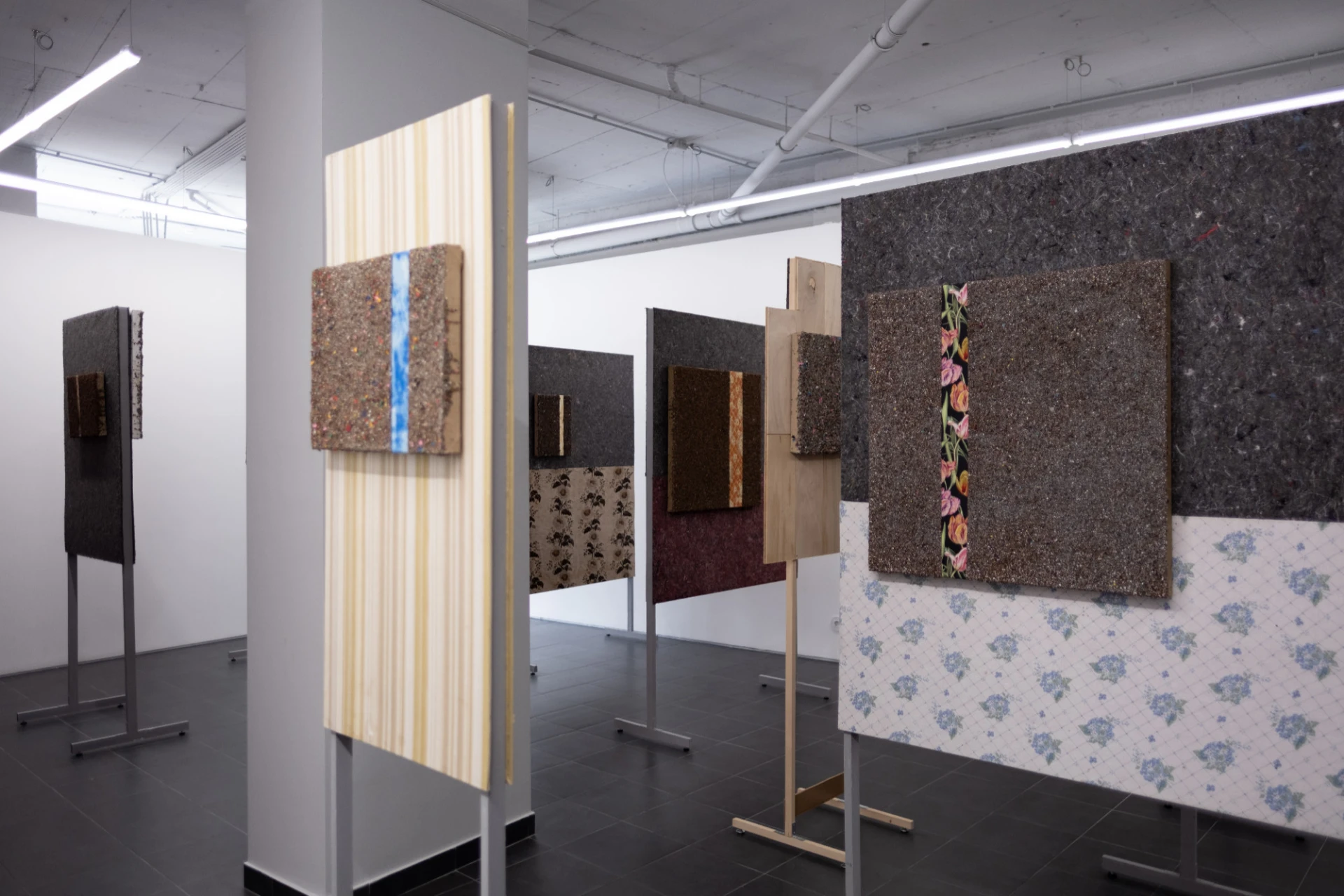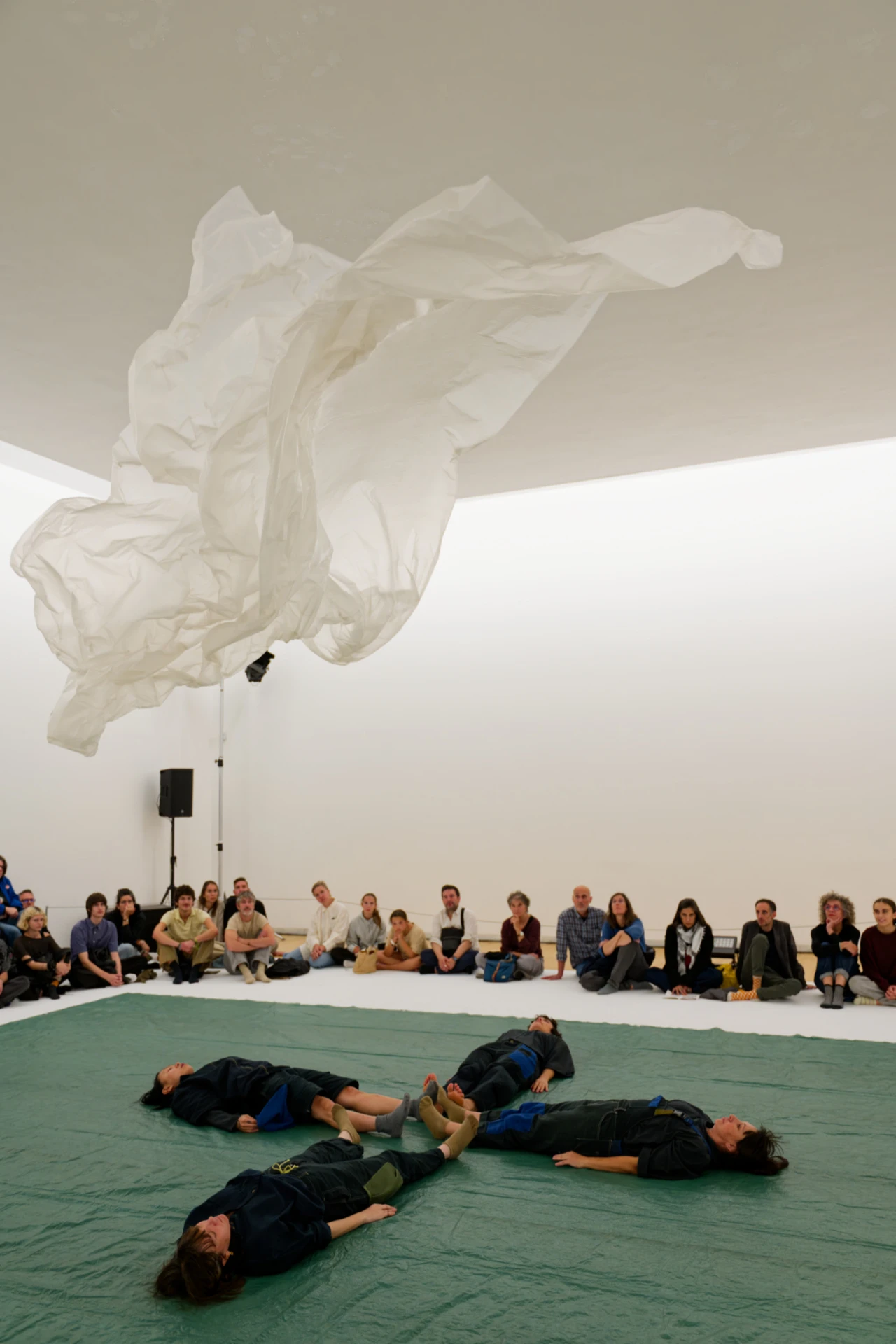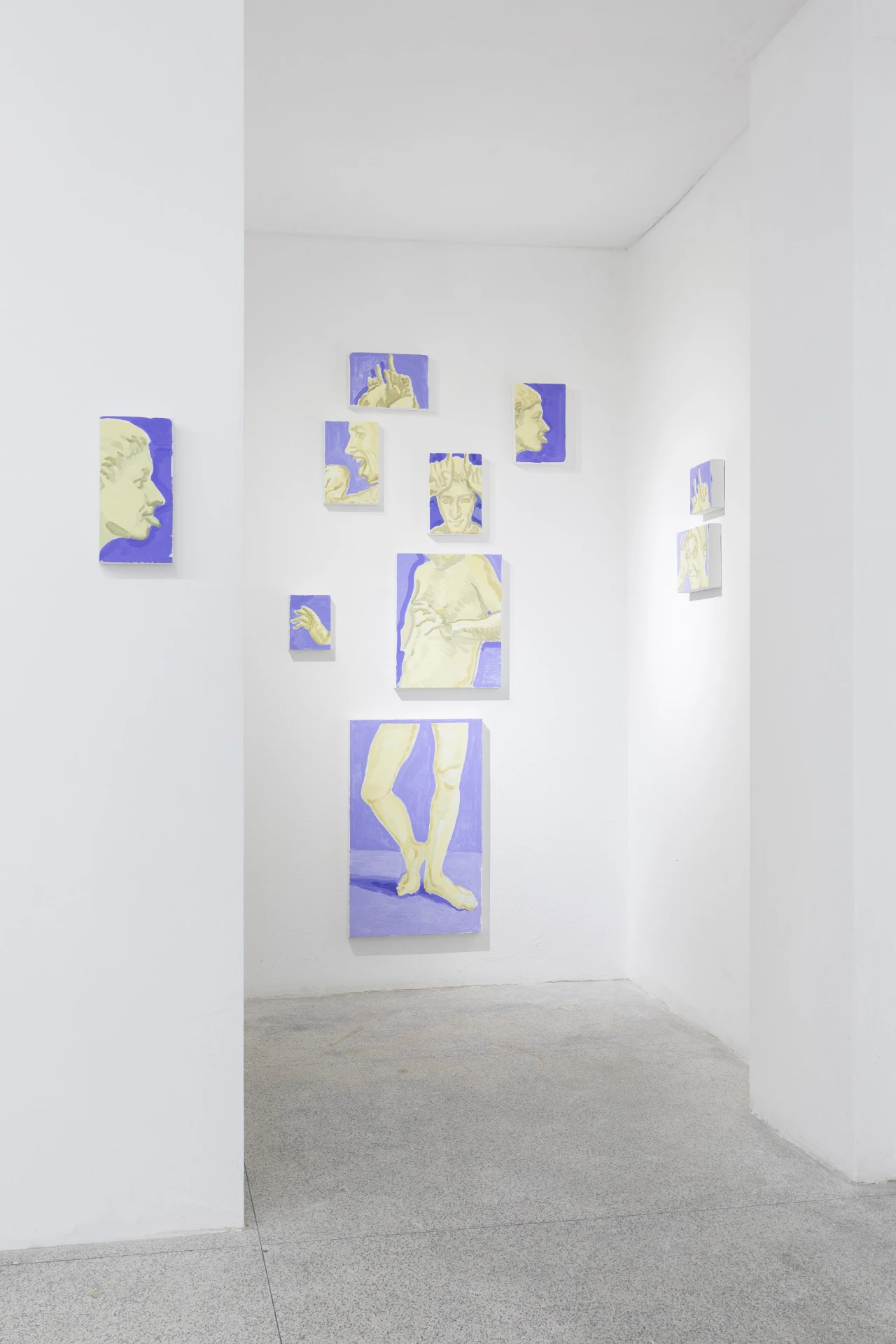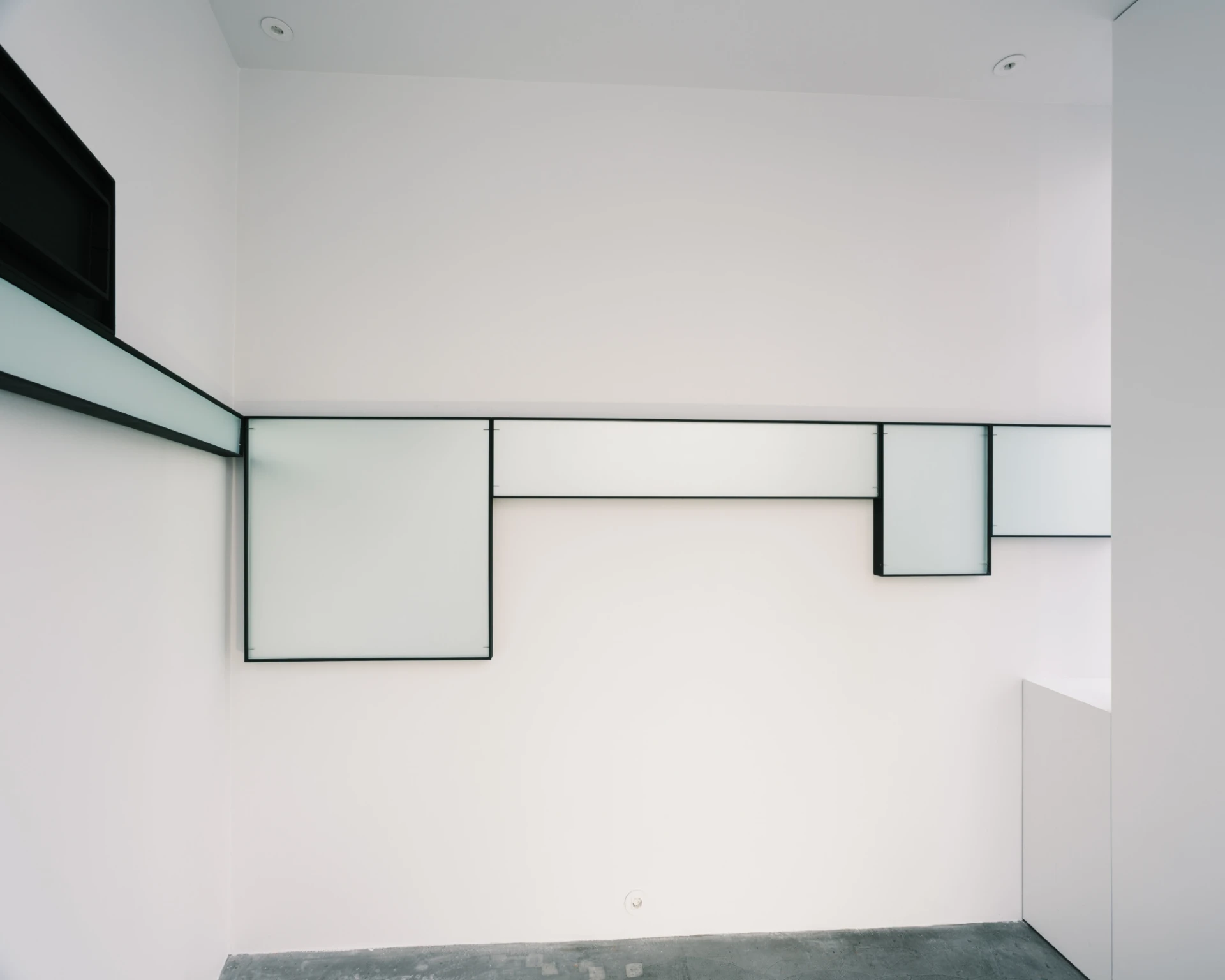article
The Museum as Performance, at Serralves
The Museum as Performance, in Serralves, opened its doors with a request: do not be afraid of the dark. Just below, a caption offered rational consolation, a kind of positive reinforcement: ‘After three minutes, it is possible to get used to the darkness and find your way around the gallery. Go down to the gallery, following the handrail for guidance.’ Three minutes were enough to break the pact of contemplation. The museum was no longer just a place to look, but a space where touch became reasoning and skin became thought.
Amid nervous laughter, we were tempted to break the rules and, in the silence – that sign that we are alone – we almost gave in to the temptation to replace the ringtone with the mobile phone display. We resisted. And as we descended, accompanied by the sound of the alarm and the vigil, the space lit up and went out in flashes of red (never bright enough to reveal the entire space, but strong enough to heighten our apprehension). In the end, the body that had entered fearfully emerged victorious, reconciled with the journey.
And this entrance summed up Serralves' proposal: an encounter with what is uncomfortable, awkward, sometimes tedious, but also harmonious and spirited. A museum that imposes itself as a locus where thinking still takes place without the intermediary of words. A space where experience has not yet been organised into concepts. An inaugural state, prior to interpretation — perhaps the moment when feeling has not yet been translated into speech. A territory of gestures, sounds and rhythms where the body seeks a way to express what it is going through. A way of thinking that is done through the flesh, living flesh, which for a moment has not yet been fixed in terms or meanings, and therefore expresses itself in babbling, in hesitation. Thinking is the realisation, the materialisation of what was pre-thought, Clarice Lispector tells us. Here, she felt before anything meant anything: consciousness was replaced by a physical, almost animal attention. To live is to enjoy, Lispector reminds us, but enjoyment, in this context, eluded the concept: it was not rational, it was almost virgin. To enjoy was to inhabit the gap between feeling and understanding, to accept that meaning only comes later, when we are no longer in the place.
May I step on Nour Mobarak's carpet? I heard someone ask in the distance. Funny: that person, without knowing it, was reading my mind. In fact, if we weren't in Serralves, no one would hesitate. A carpet is meant to be stepped on. It protects from the cold, from dampness, from the inevitable slips on rainy days, such as 19 October, and welcomes the body. But there, that gesture took on another meaning. We knew where we were, and that knowledge regulates the body: it defines distance, measures boldness and suspends impulse. That carpet had a name, and a name changes everything. Transformed into a work of art, it imposes itself as a fragile, vulnerable, almost sacred piece. We hesitated, not out of prudence, but out of fear of contaminating it. We know that rainy days bring dirt, and that dirt turns into mud, sticking to our shoes like a persistent barnacle. So, before moving forward, we asked ourselves: could they damage it? That carpet, hand-woven in Beiriz, measuring seven metres by seven, was too big to be just an object, too noble to be just a floor. Beneath it, a sound installation evoked a personal memory of the artist. The recording we heard was not pure. The result of different manipulation processes, its sound showed that memory is a construction, a way of reconfiguring what has already been experienced, of recomposing places, objects and images. Memory is made up of various stories we tell ourselves. That one was told to us, and we entered it through the reverberation of what sustained us: our feet. The initial question was not practical: it whispered the guilt and discomfort of a body that does not know how to be.
Hybrid #1, by Andreas Trobollowitsch, took place in the museum's garage on 18 October. At 5 p.m. (a time of transition in terms of light), the difference between the bodies was linked by a common goal: to descend into the museum's basement and remain in a place reserved for transit and passage. For many, this descent corresponded to the materialisation of an inaugural experience – their first time in that space. Several chairs were arranged facing each other, and between them we could see mechanical turntables, flutes and balloons. The sound heard from the flutes resulted from the air expelled by the balloons, whose rotation was ensured by the turntables. Accompanying them were the members of the choir, each seated in their chair. Their figures, almost motionless, stood out due to the minimal vibration of their mouths that the sound revealed. Their voices, almost absent from their gestures, mingled with the blowing of the flutes. We found ourselves in front of a monochromatic scene: the white of the balloons and the black of the clothes drew the contrast between the visible and the audible. The sound, delicate and rarefied, did not fill the space, it shaped it. It seemed to be born from the air and return to it, like a breath whose origin we could not discern. A space of resonance, an interval. And perhaps the only question that remained for us, when, after the end, the muffled echo returned and the noise reappeared, was: had we been, for a few moments, in heaven?
At 6:30 PM on October 19th, the sound returned in a state of alarm with Tiran Willemse and Melika Ngombe Kolongo. The artist's hands moved in a feverish rhythm, and the sound was untimely, a vibration that struck us precisely before any thought. Instinctively, we put our hands to our ears, a gesture of defense, of restraint, of fear. The uncontrolled and unpredictable movement on the part of the artist made it clear that the spectator couldn't remain neutral. To participate or to interrupt? Hesitation was also the theme: where to remain? Before that body that leaped, as if there were a trampoline beneath its feet, and launched itself against the walls, the question arose that permeated the entire performance: were we experiencing madness or merely the limit of the sensible in a controlled environment? The end part of the performance – if felt, and for the moment – ran from us as if we were yet again in the dark.
The 11th edition of Museum as Performance took place in Serralves on October 18th and 19th, and we left in silence, as if we had forgotten the language.
BIOGRAPHY
Débora Valeixo Rana (b. 1990, Lisbon, Portugal) is a philosophy teacher living in Porto. She graduated in Philosophy from the Faculty of Letters of the University of Porto (2011) and has a Master's degree in Teaching Philosophy in Secondary Education (2019). Her academic and professional career reflects a deep interest in the intersection between Art and Philosophy, a dialogue that led her, in 2022, to take up a master's degree in Artistic Studies and Art Criticism at the Faculty of Fine Arts of the University of Porto.
ADVERTISING
Previous
article
-m8btp.jpg)
17 Nov 2025
36th São Paulo Biennial - Human Inside and Outside the Human Body
By João Victor Guimarães
Next
article

18 Nov 2025
O Museu das Microagressões, de Pedro Gomes
By Laurinda Branquinho
Related Posts



